The Near and the Elsewhere was the title of an art installation that consisted of a quasi-architectural space within Suprainfinit Gallery in Bucharest, Romania, that opened on March 5th 2020. The exhibition took the form of an installation that referenced elements from a “dis-used” swimming pool that in turn housed several sculptures by German artist Kristin Wenzel.
The entire main room of the gallery was altered to accommodate the installation. To enter the space one ascended steps onto a platform in order to then lower oneself into the installation via a set of replica swimming pool ladders. This physical necessity already established a meta-theatrical sense of participation determining the visitor beyond that of a mere viewer.
The “swimming pool” therefore did not need to be fastidiously dedicated to representing an actual pool but have enough physical and visual references to set up the required “abandoned” pool-like mise-en-scène. Surrounding this space, the artist placed 6 associated objects each relating to architectural aspects of decor which, being partially glazed, seemed to sit with both ease and discretion at the pool’s edge. In the centre of the space was a drinking fountain adding sound and a distinct watery element into the space ’emptied’ of water.
The space created by the pool was also to be a speculative social arena with the artist inviting and accepting proposals from a variety of other artists. For example, there was to be daily Yoga and a reading group with possible film screenings and performances etc. to follow during the exhibition.
For the hosting of art objects and the series of events, the pool itself was to be an atmospheric, thematic backdrop that related both to the artist’s ongoing interest in faded East European modernism and architectural relics alongside her personal history of semi-professional aquatic activities and training during her childhood.
However, a few days after the opening the Romanian State instigated measures and restrictions in relation to Covid-19. Like the Berlin wall going up overnight, the State of Emergency, called for by the President, effectively closed every public space and banned social gatherings, making the gallery a forbidden space for people to visit. This prohibition was based on the idea of preventing the spread of the Coronavirus, hence the gallery had no option but to close. The pool therefore could not perform the function that the artist had intended it to undertake. A distance was established between the public and the gallery in the same way that it manifested between the artist and her ideas and plans for the installation’s social programme.
Before these restrictions, an inaugural event did in fact take place on March 7 th when the Bucharest based video and sound artist Simina Oprescu presented a sound performance. Entitled Deep Surroundings with a splash of water it was a live sound installation with an audience comprising 40 minutes of various unidentifiable recordings and music including the sound of water. It set the scene for the possibilities of Kristin’s intentions for the work. However, this was to be the first and last such event.
The original notion had always considered the pool to be a space where something else was going to happen or that something else could and would take place in the portent environment. This turned out to be true but in a direction that the artist could not have foreseen.
When the restrictions were imposed the dynamic was altered. By the very fact of this change of status, the pool, now emptied of its social potential, seamlessly accepted its new identity of being an actually abandoned, forbidden and apparently clinically dangerous space.
In its initial state it could not claim an authentic status of dereliction but in the newly transformed condition that is exactly what it became; from theatrical scenario to a genuinely disused entity. The artist’s desire for it to be a space of meeting and interaction was halted and usurped but, in its place, a new space emerged; one with a reality not possible within the previous space which, no matter how well conceived of or produced, could never have been anything more than a representational scenario.
This new pool was an installation firmly activating its agency and articulating its autonomy outside of the control of either the artist or the State. The closing of the gallery with this pool inside meant that it lacked the simple equivalence of the closed club or shop. In fact, it became a different type of art space, inadvertently acquiring the status of a forbidden zone, hosting an autonomous art entity within.
The Near of the known, initial idea became the Elsewhere of the independent installation viewable as stubborn documentary images online or seen through the window of the clearly padlocked gallery.
There were now two pools: one an anodyne online picture the other an actual banned and harmful physical space, as if actually contaminated.
Thus the literally impossible project of placing a dis-used pool in a gallery became possible via the independence of the art object itself!
The initial pool was presented, as it were, already emptied of water and bearing only the resemblance of dereliction. Now it was Elsewhere, devoid of even the possibility of social exchange, legally bound to become a non-usable space yet able to relinquish control and identity and assert itself as now “authentic”. The once static image of a pool proved itself to be mutable within the contingencies of a force majeure, transferring the agency of the artist to the artwork.
With the gallery itself being in the same circumstance, both the pool and exhibition space became one; one inside the other; forbidden, hazardous yet independent.
Maybe the objects within the installation went into a kind of de facto temporary storage but the pool was altered by the simple action of the virus and the associated responses of the Government.
Nothing can negate a ghost image and even the State cannot not close a closed pool.
POSTED BY
Giles Eldridge
Giles Eldridge is a visual artist (born England, 1965) based in Bucharest since 2015....
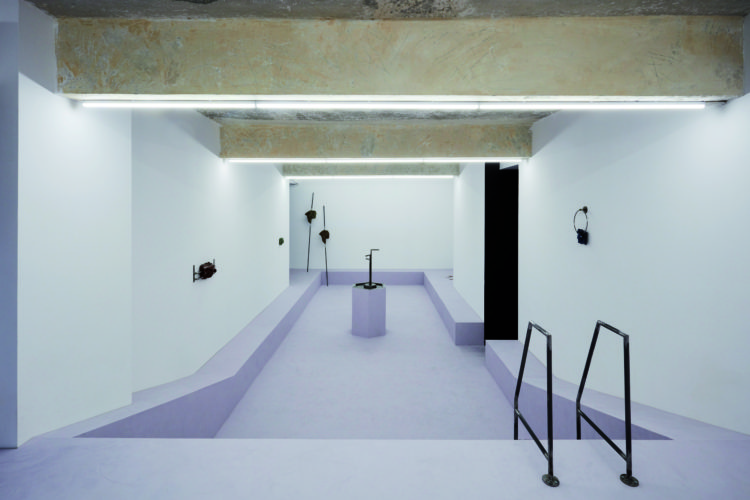
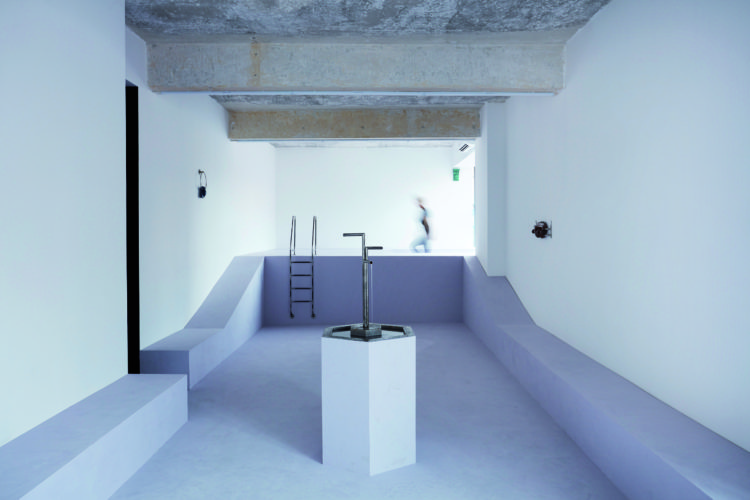
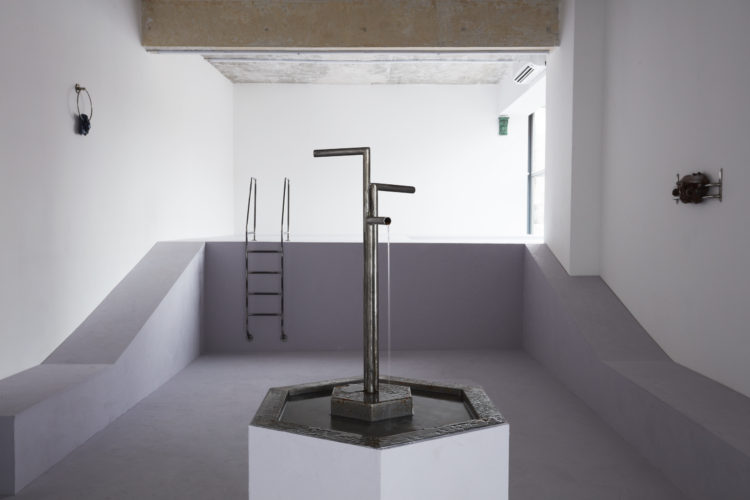
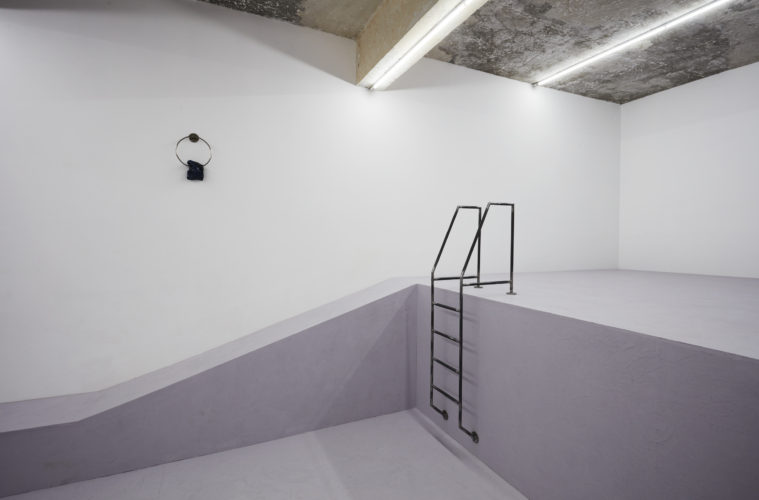
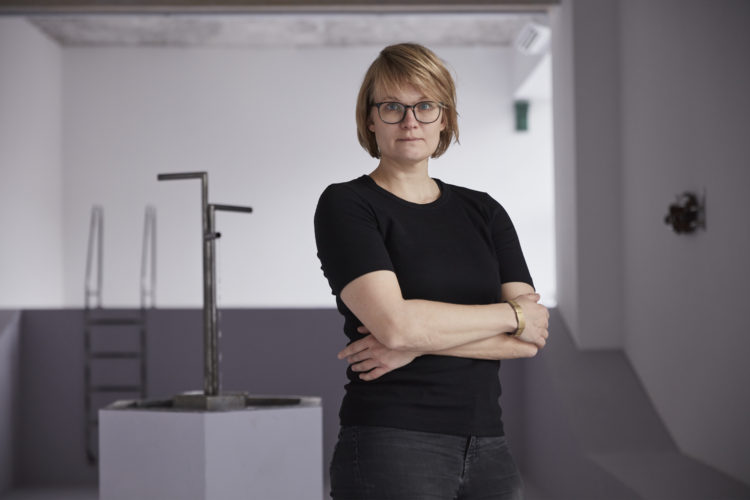
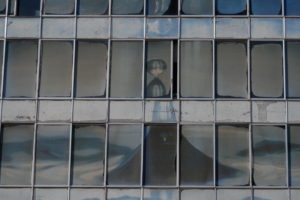
Comments are closed here.